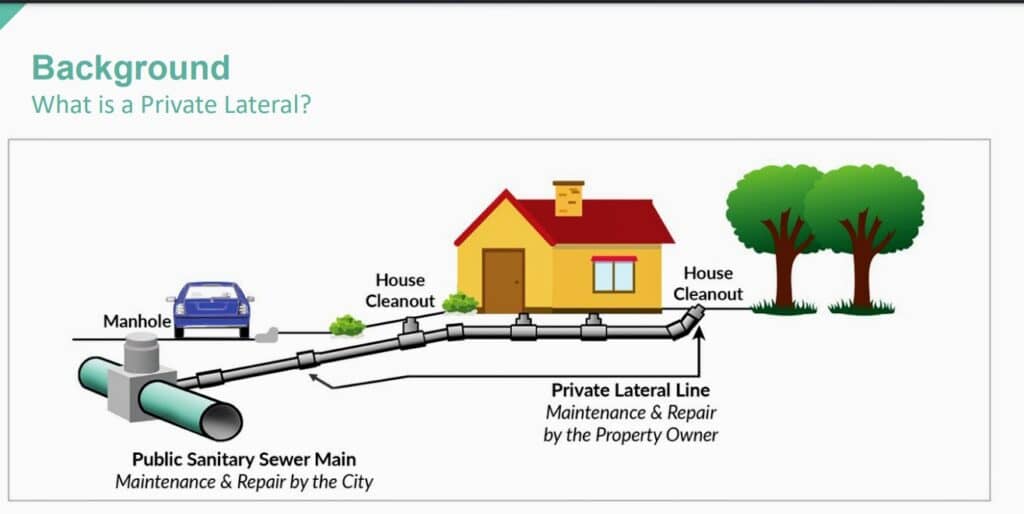Thrive
Pilot program drastically reduces sewage flows

St. Petersburg officials incurred significant penalties following sewage overflows in 2015 and 2016; the water resources department agreed to create a Pollution Prevention project rather than just paying the fines.
Kira Barrera, the department’s special projects coordinator, said the result was a successful private sewer lateral study. She led a presentation on the pilot program and its recommended expansion to city council members at an Oct. 12 committee meeting.
First implemented in 2019, the goal was to reduce inflow and infiltration to St. Petersburg’s sewer system by replacing faulty private laterals. Inflow is surface water from yards, roof drains and downspouts.
Infiltration is groundwater from holes and connection failures in laterals – the pipe that connects a home’s plumbing to a public sewage system. Homeowners must maintain the expensive private infrastructure according to city ordinance.
“There are a number of benefits to implementing a private lateral rehabilitation program, both for the community and the city,” Barerra said.

A graphic showing how a private lateral line connects to the city sewer system.
She explained that the average inflow and infiltration (I&I) reduction was 34% per home. That number jumped to 64% when combined with public upgrades.
Michelle Collins, project manager for Jacob’s Engineering, said the study found private I&I mitigation efforts were more cost-effective than public infrastructure upgrades yet achieved similar results. Barerra noted that decreasing I&I corresponds with fewer sewer overflows, “which I know is one of our number one goals.”
“It also improves the reliability of biologically based (water) treatments … because we’re not having those pulses of freshwater and stormwater into the system,” she added. “And when implemented strategically, it maximizes social equity benefits.”
The water resources department conducted the pilot study in the Greater Pinellas Point and Maximo Moorings neighborhood of southwest St. Pete. She said the area encompasses about 300 homes, and most were built with aging piping that now needs repairs.
Participating homeowners received free inspections, and those with defective laterals were eligible for upgraded equipment. While residents could have received up to $8,000, the average cost of the 126 projects was just under $5,000.
Public works officials now hope to expand the pilot throughout the city, starting with low-income households with the worst I&I issues. Many of those areas are in central St. Pete.
“It was a challenge,” Barerra said of the study. “Not just because we were doing it during Covid. It’s really hard to get people to let you on their private property, and if they’re not having an issue in their home right now, to understand the importance of the project.”
Extensive public outreach included letters from city administrators and the mayor. Program officials conducted and attended several public meetings and events.
They also created a public website, marketing video and yard signs. However, just 48% of Greater Pinellas Point’s 155 eligible homeowners allowed the city to conduct free assessments, compared to 76% of Maximo Moorings’ 137 potential participants.
“We believe that was due to the different socioeconomic levels of the neighborhoods, and just access to the information, flexibility and scheduling the work,” Barerra said. “And then concerns about hidden costs or eligibility for the rebate.”

A graphic showing inflow and infiltration sources.
Councilmember Deborah Figgs-Sanders asked why the department used the term “rebate” when it provided up to $8,000 in free services. She also noted that many people in low-income neighborhoods rent their homes.
Barerra said city attorneys implemented the program’s language. She hopes that can change now that officials have proven a public benefit.
Barerra also agreed that the percentage of tenants influenced the varying participation rates. She believes starting with the city’s lower-income neighborhoods would provide more time for public outreach.
The public works department has allocated $1 million to a citywide program. Figgs-Sanders and other council members expressed concern that the funding could sustain an expanded program indefinitely.
Claude Tankersley, public works administrator, said it would cost about $217 million to fix every private lateral in the city. However, he said they wouldn’t see that need – or participation – for 50 to 60 years.
“We will never completely eliminate I&I,” Tankersley said. “We only need to rehabilitate a certain portion of them (private laterals) to keep the I&I low enough for us to continue to have a system that is able to handle the flows.”
Tankersley also stressed that the city’s wastewater system can typically accommodate 56 million gallons daily. Officials can increase capacity to 156 million during emergencies, and the daily flow averages about 32 million gallons.
He said I&I accounts for about four million gallons daily, or 15% of the total flow. “I want to make sure that we’ve got funding availability,” said Councilmember Copley Gerdes. “Because this moves the needle.”
While city council members generally supported the pilot’s expansion, many questions remain unanswered. Tankersley said the goal was to recommend a citywide program and gauge their response.
Program officials will present further implementation details to the Public Services and Infrastructure Committee at a later date.








Gail Scarbrough
October 17, 2023at5:33 pm
I’ve lived in Pinellas Point for just over 23 years. This is the first I’ve heard of this. Were only certain home owners contacted?